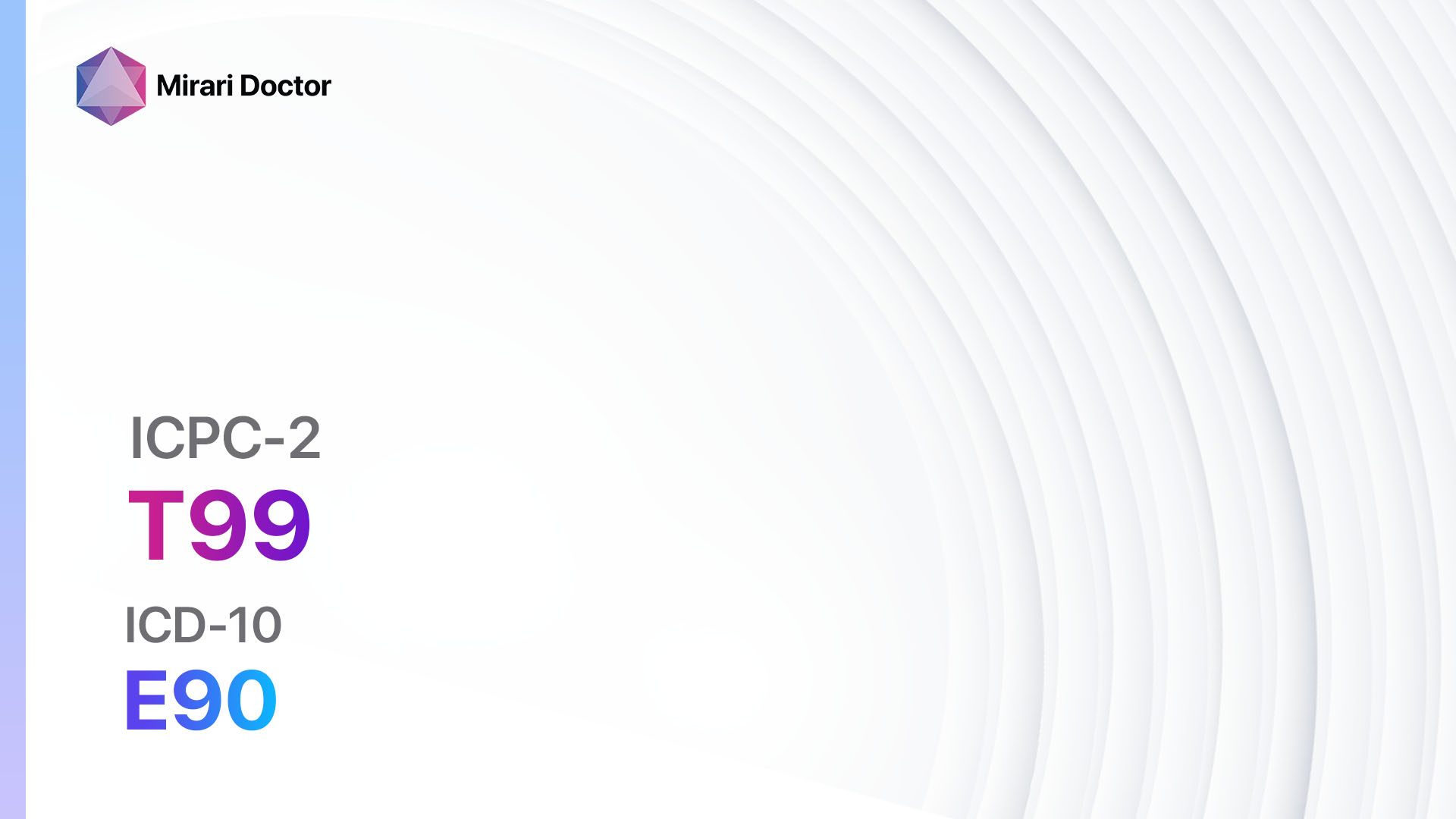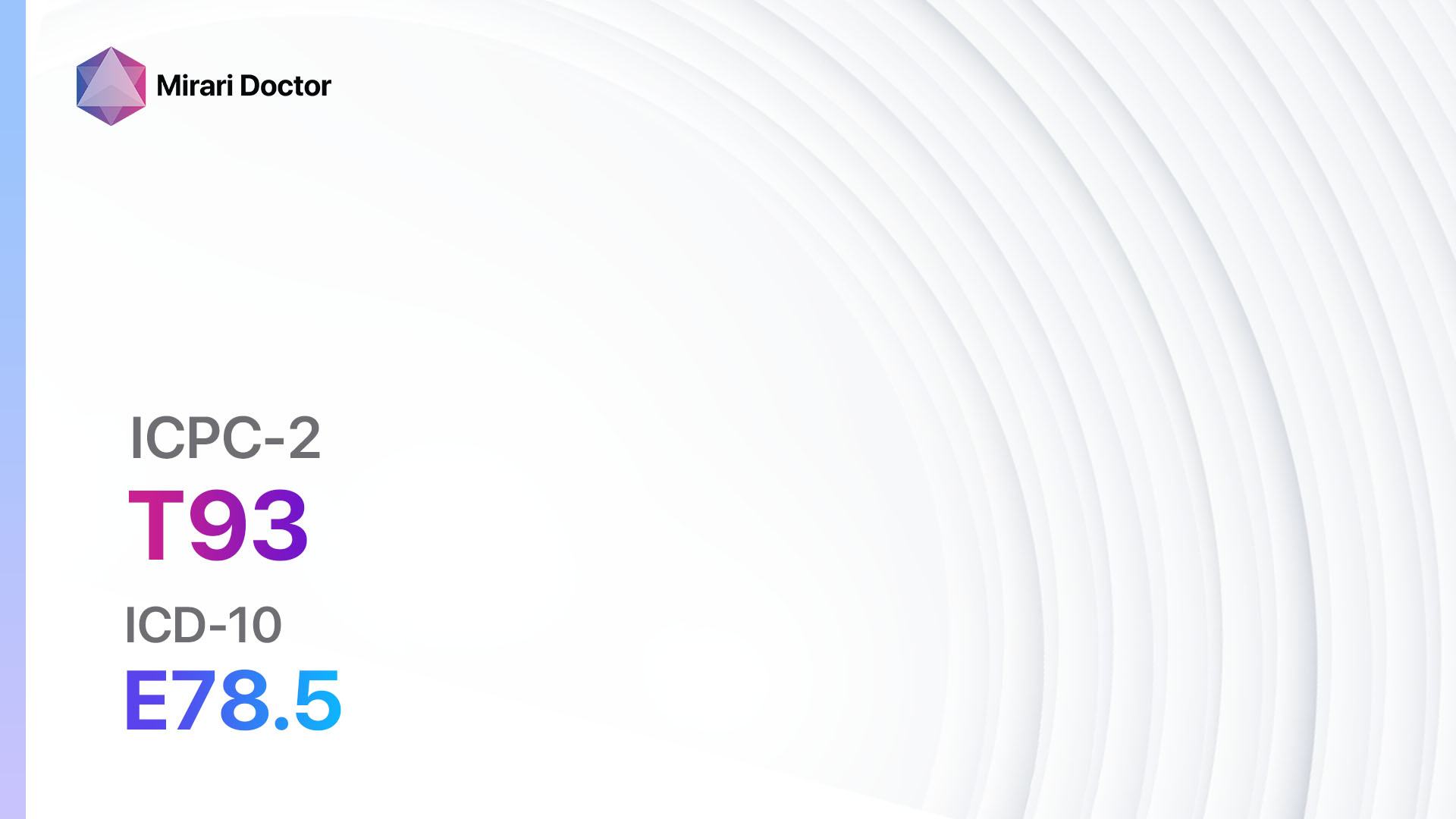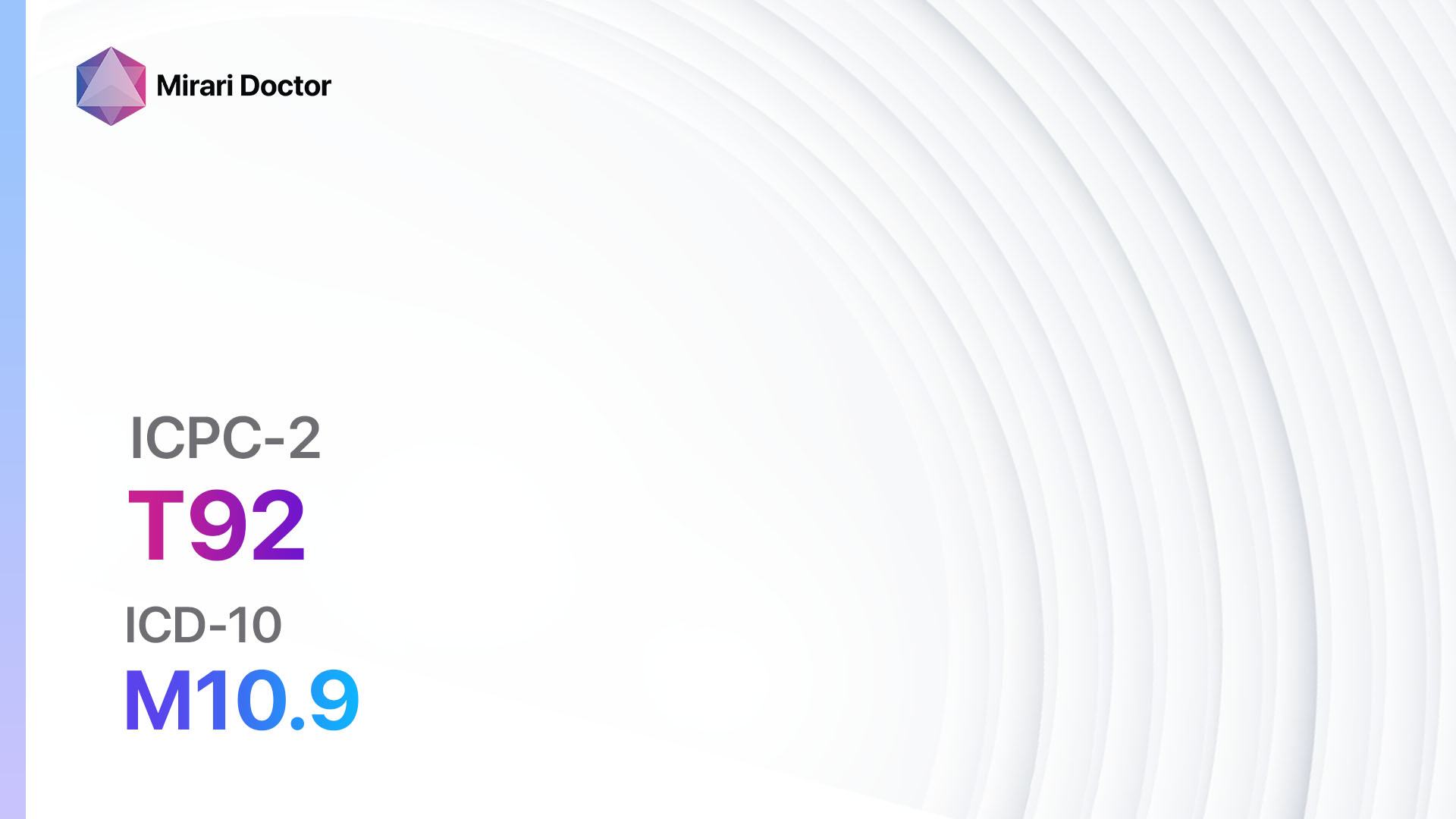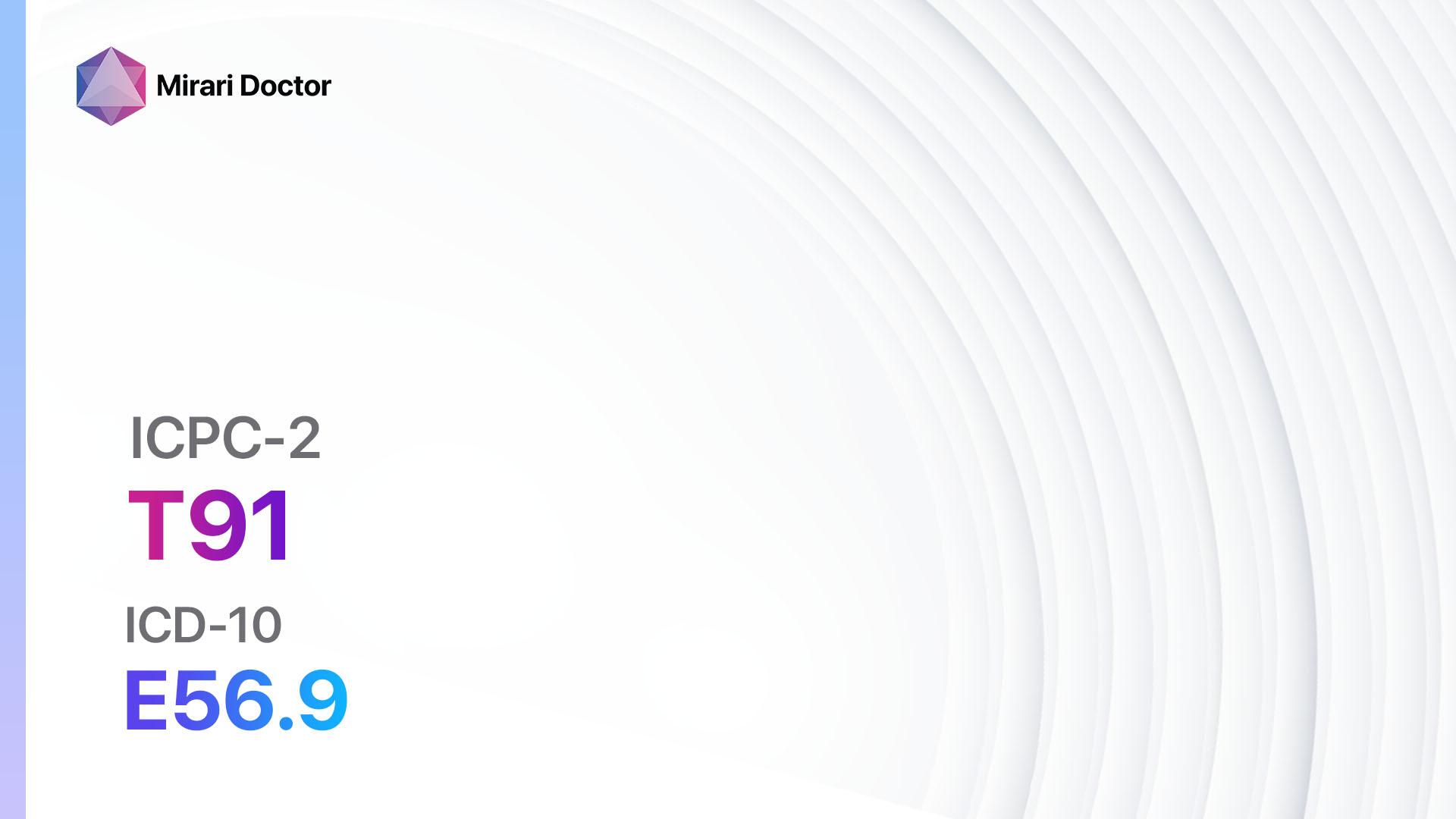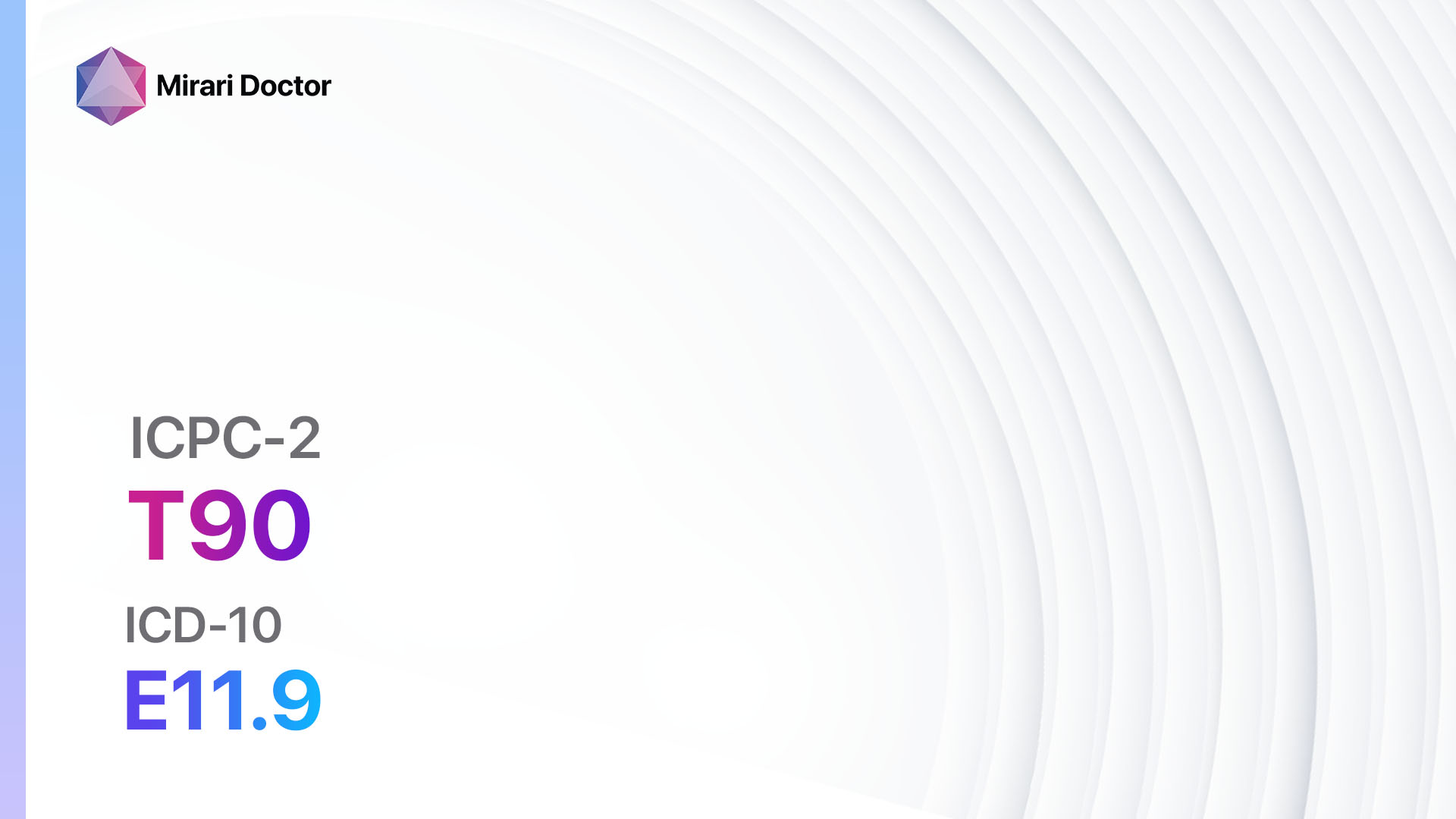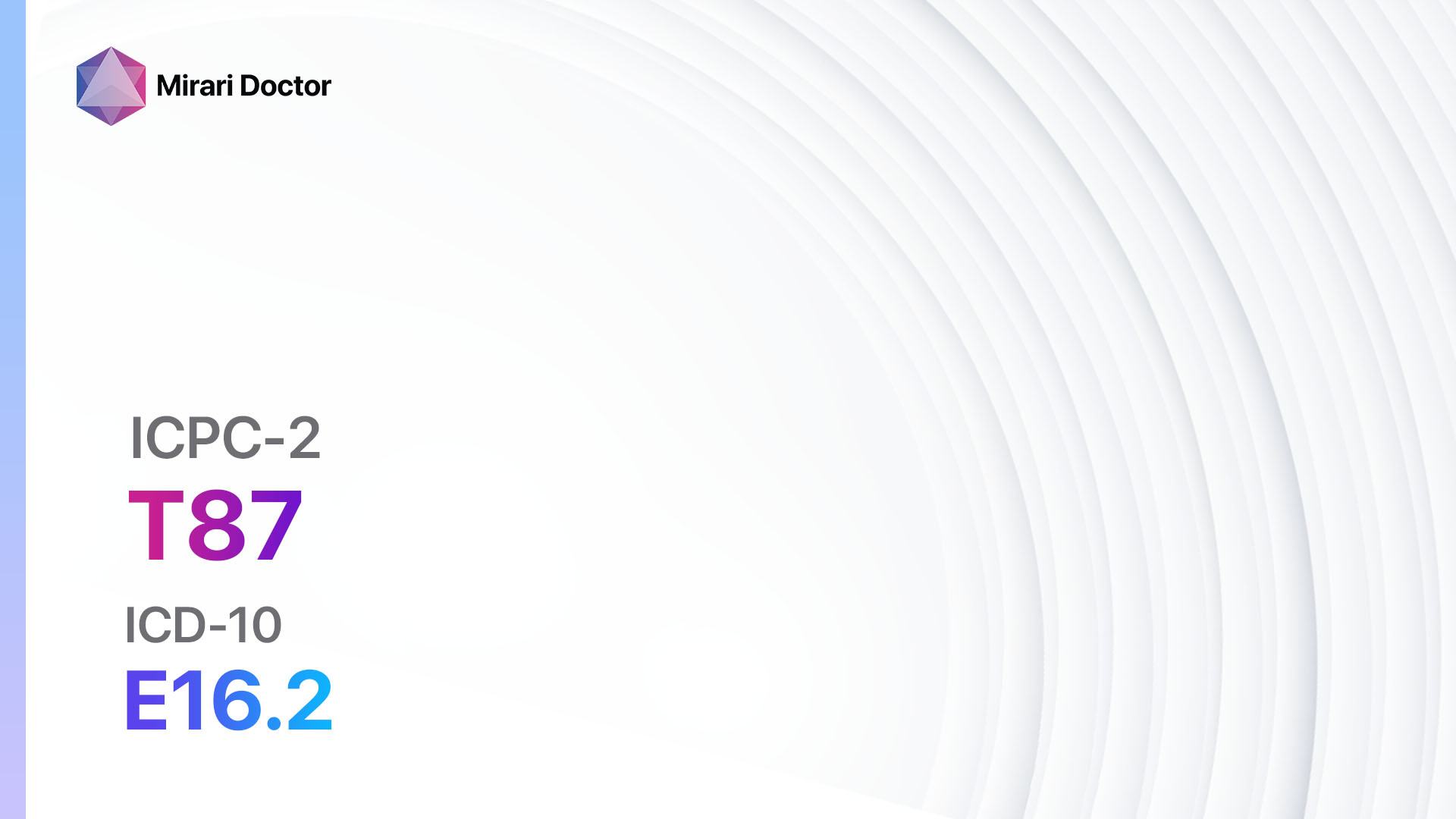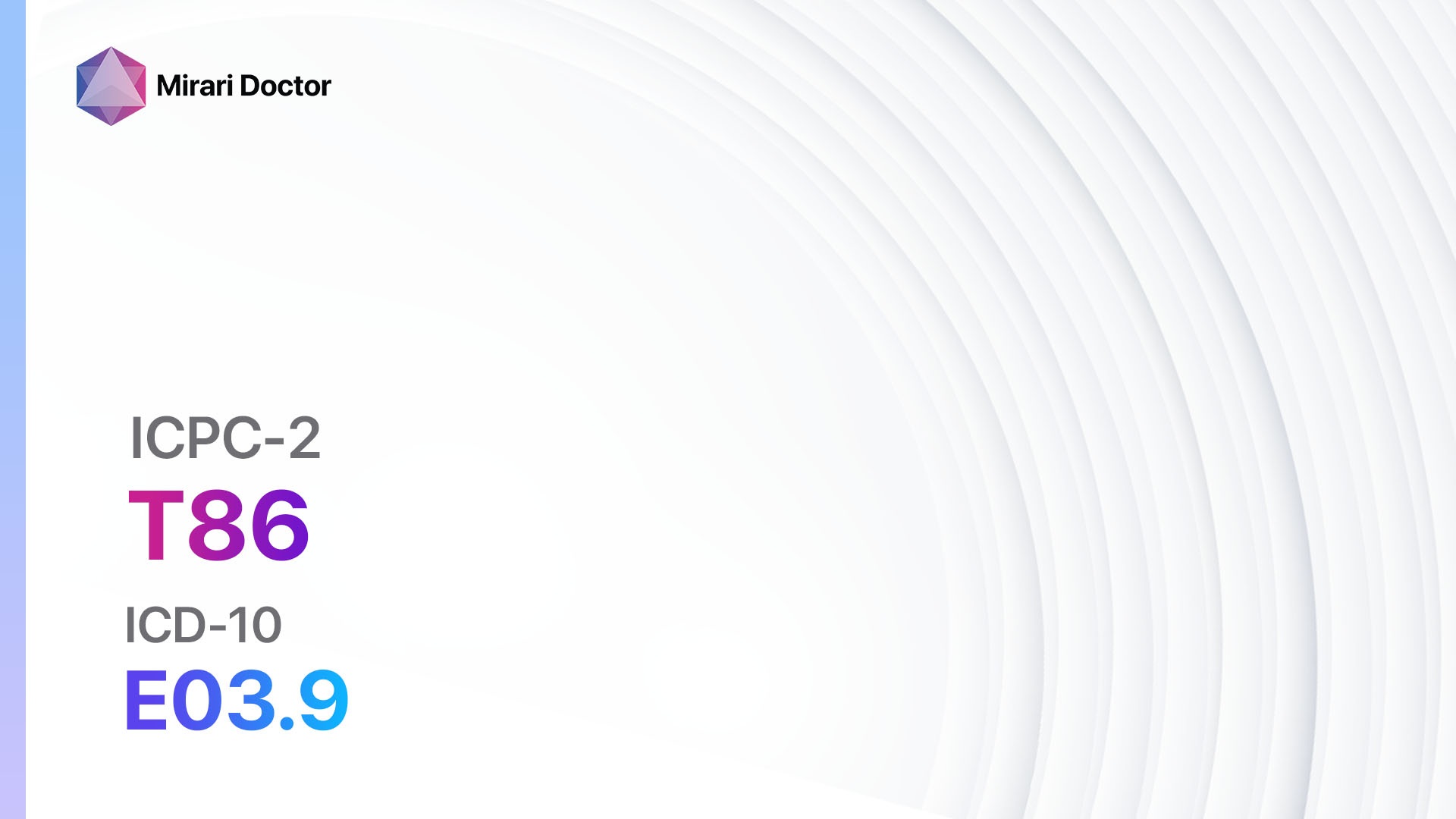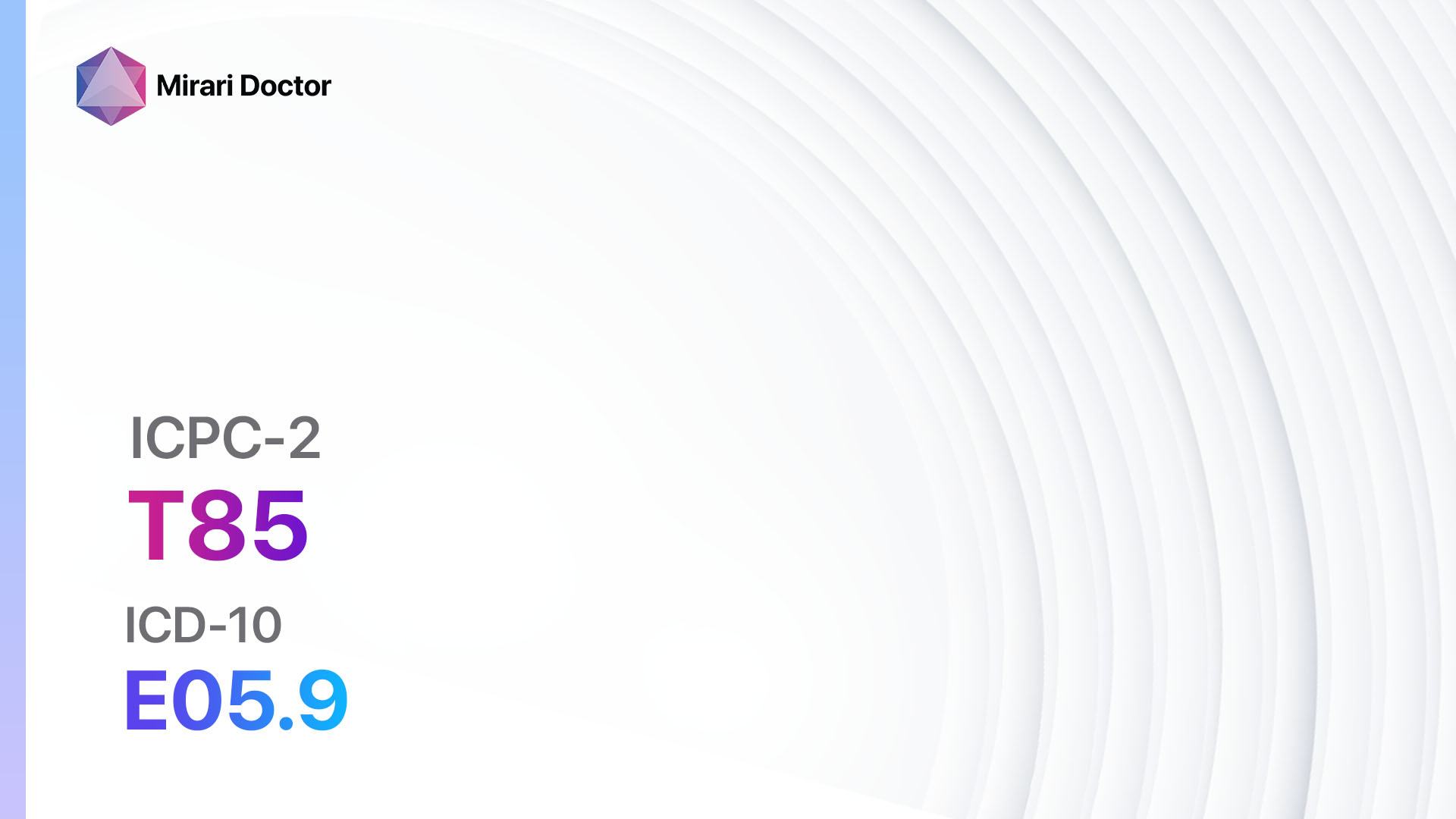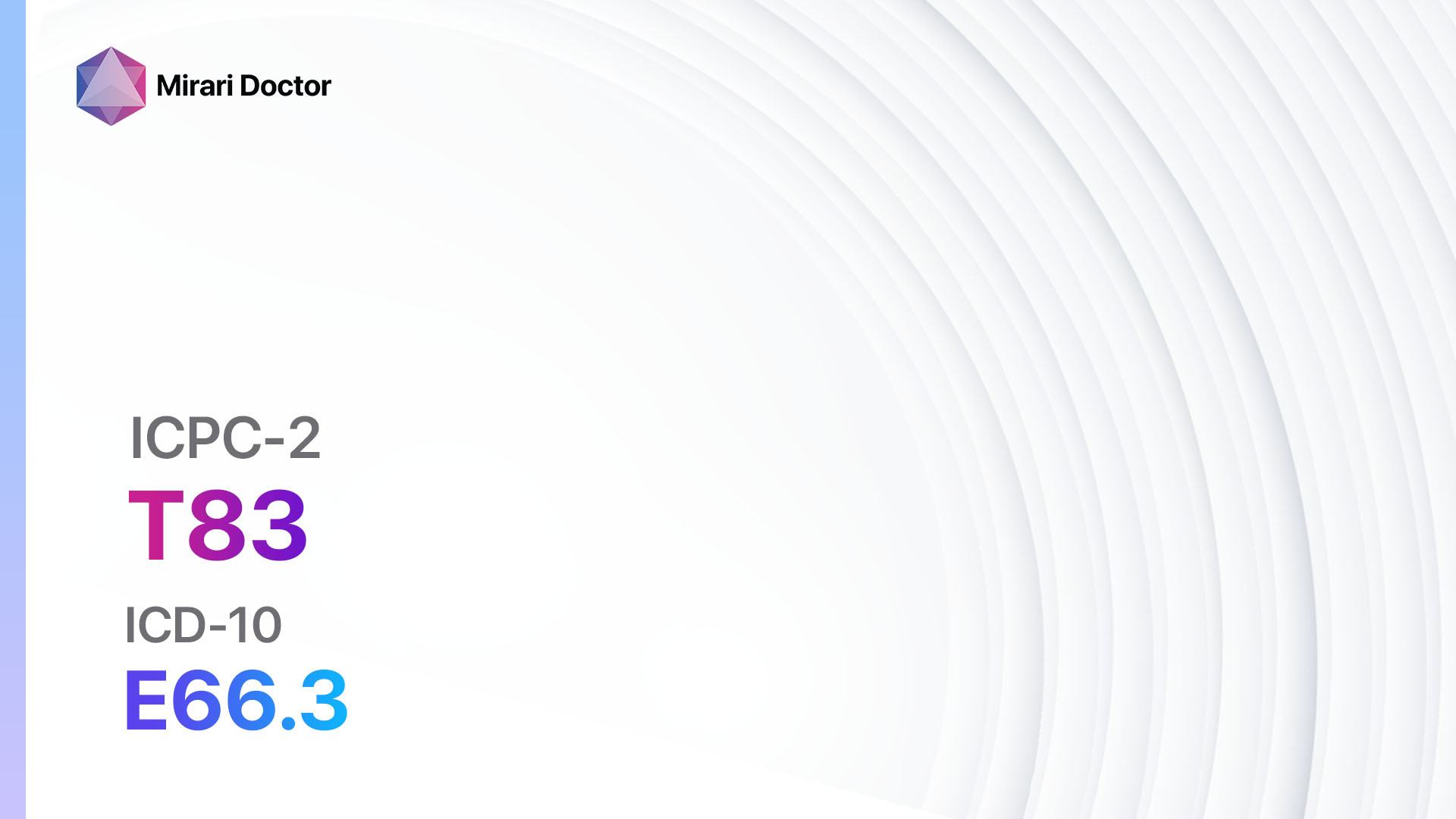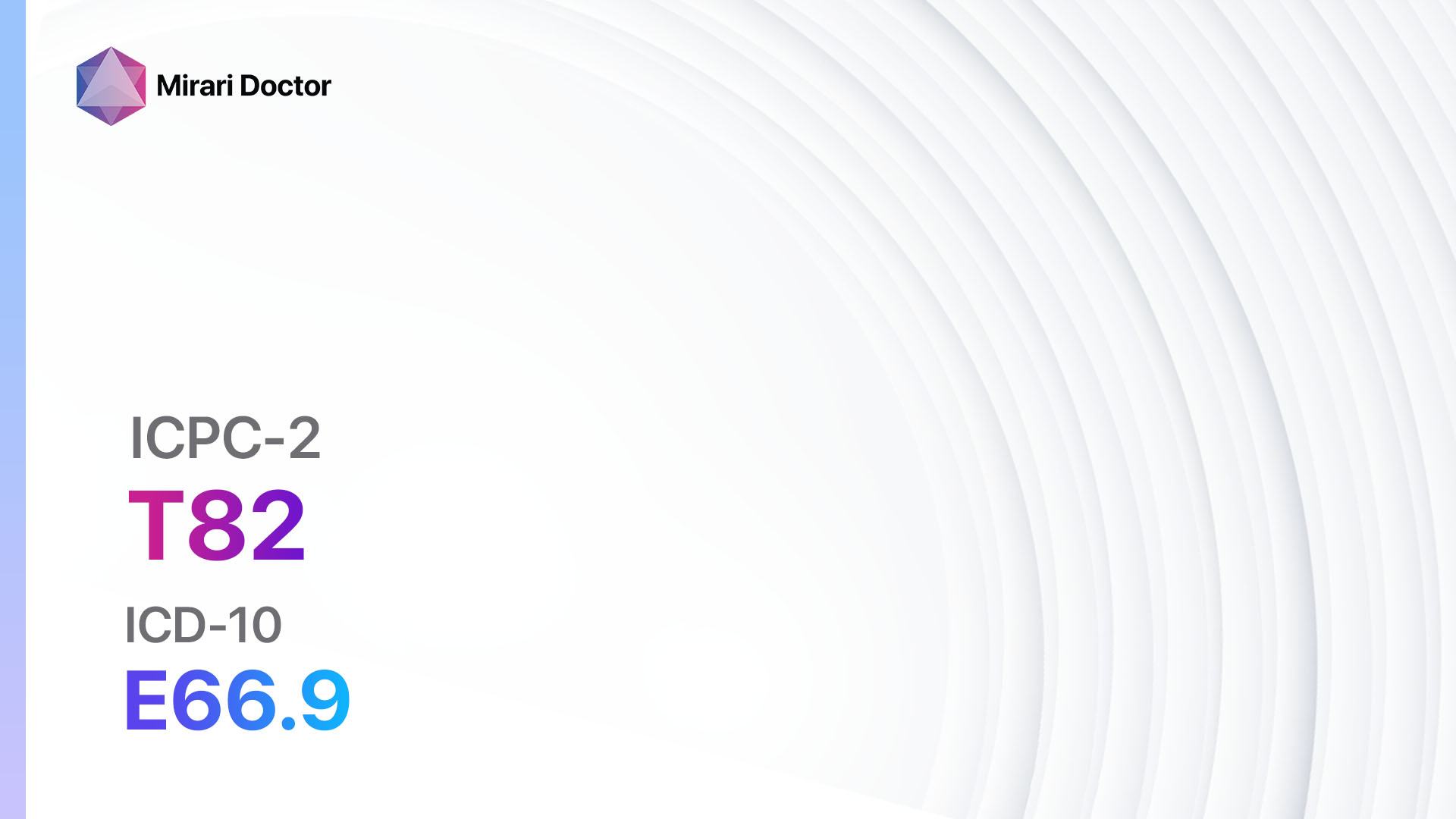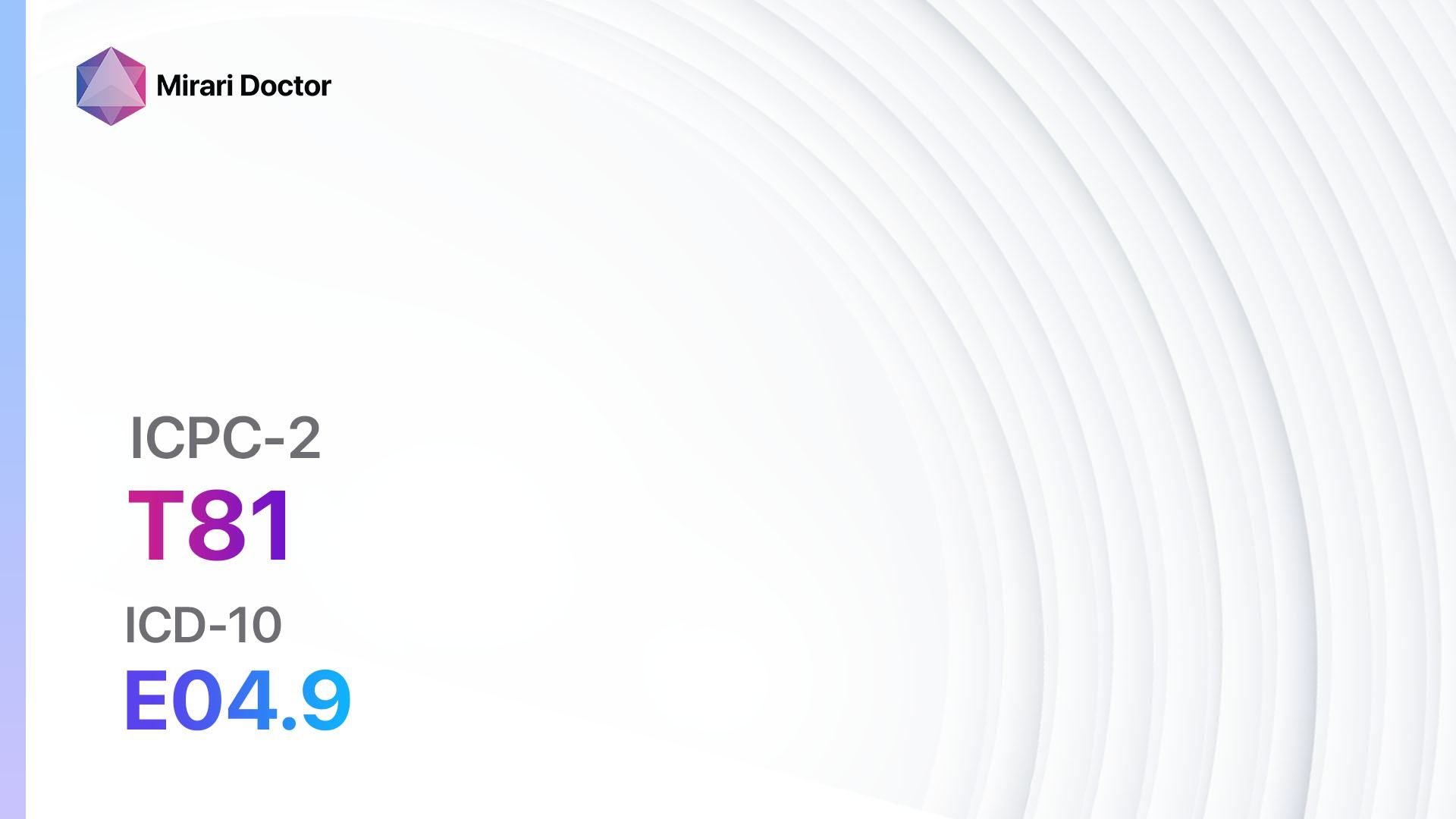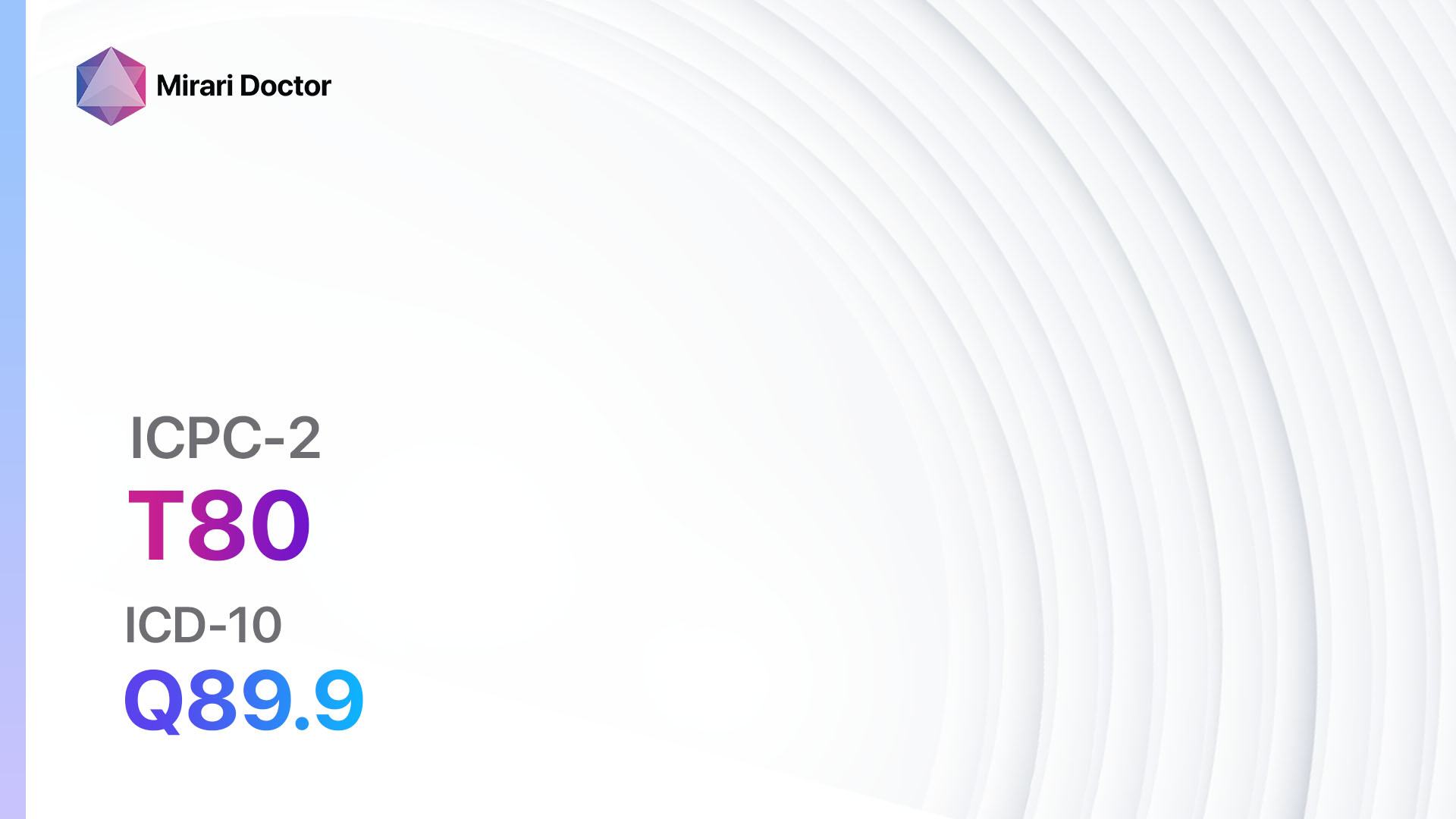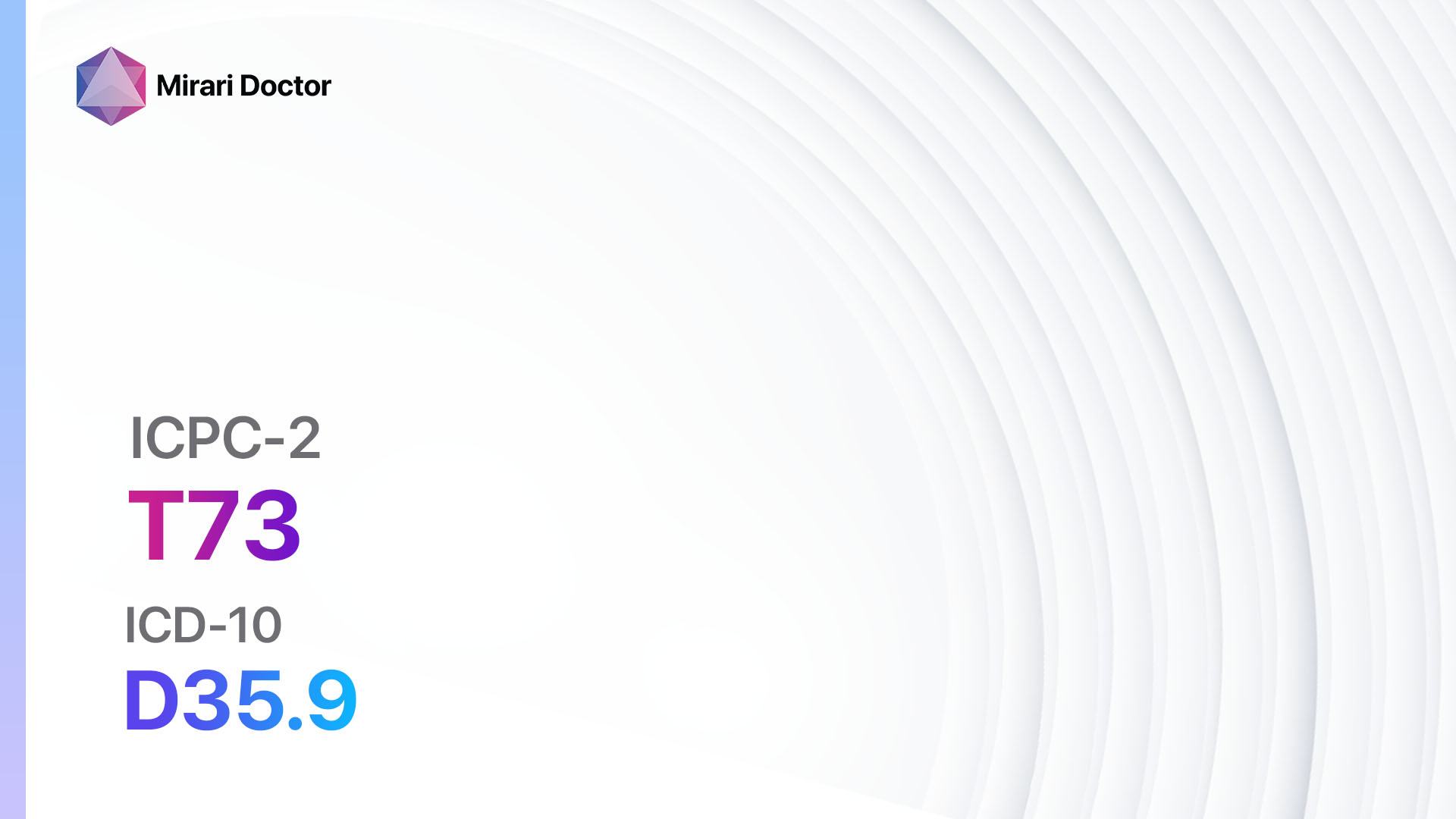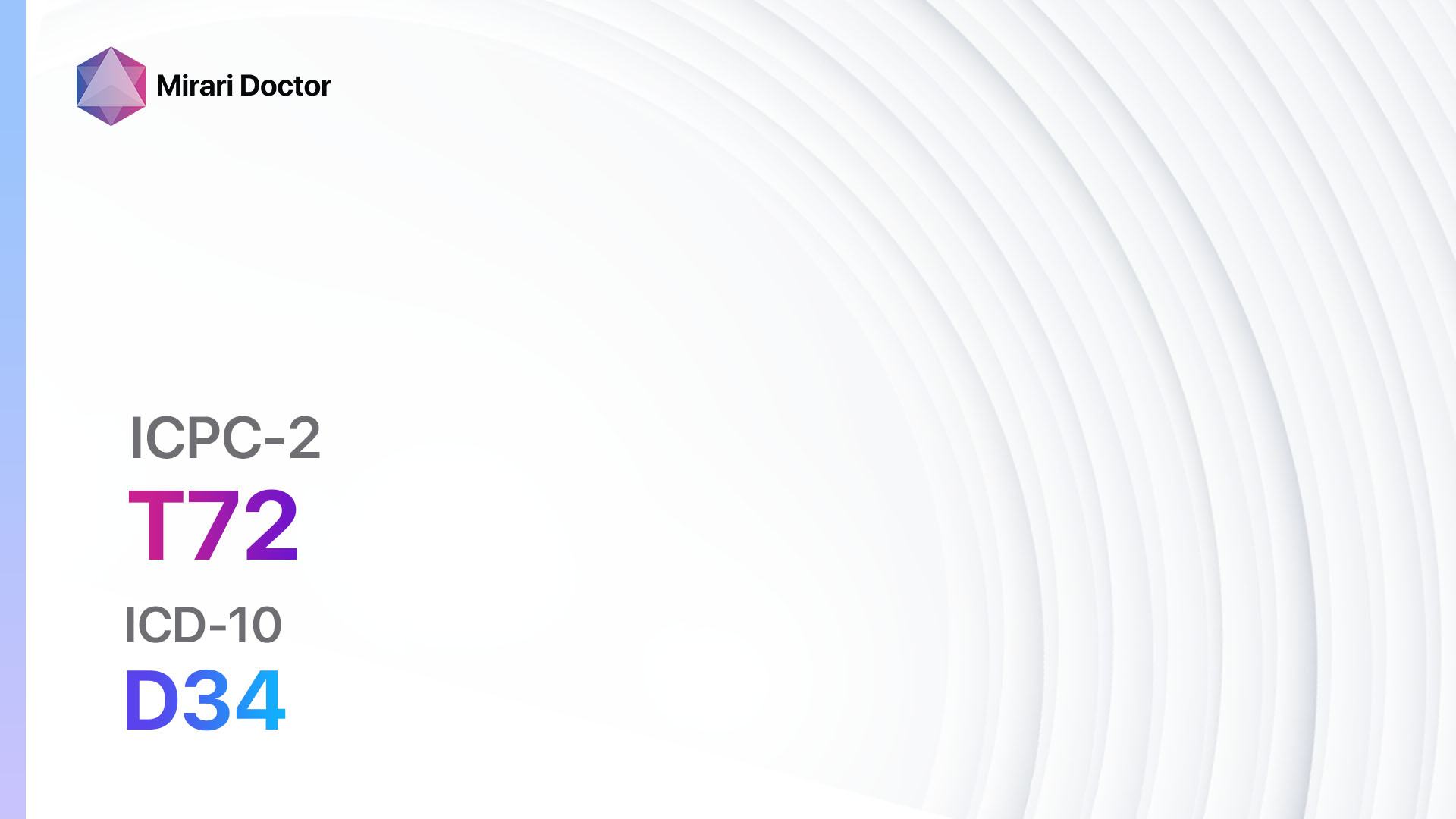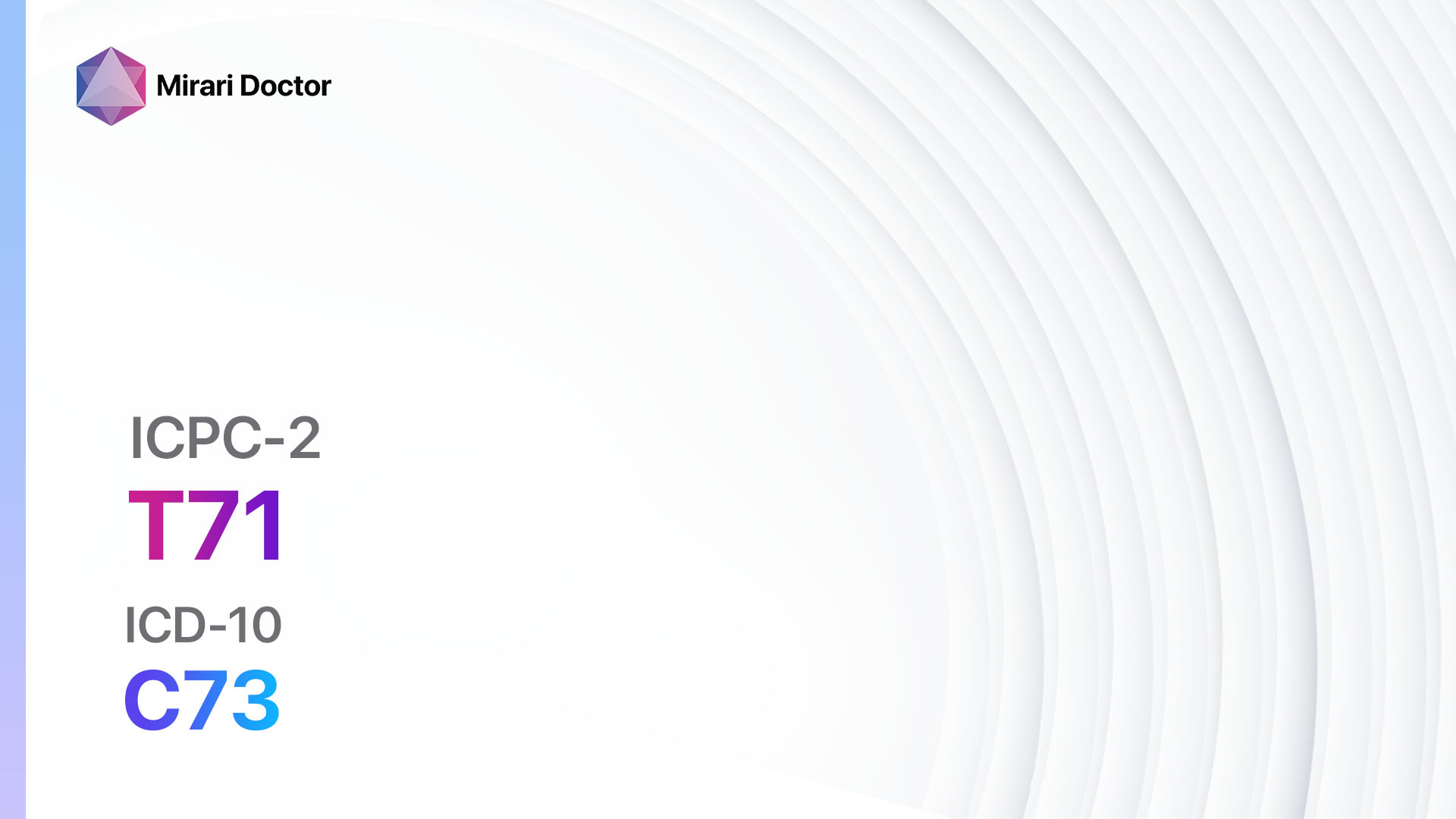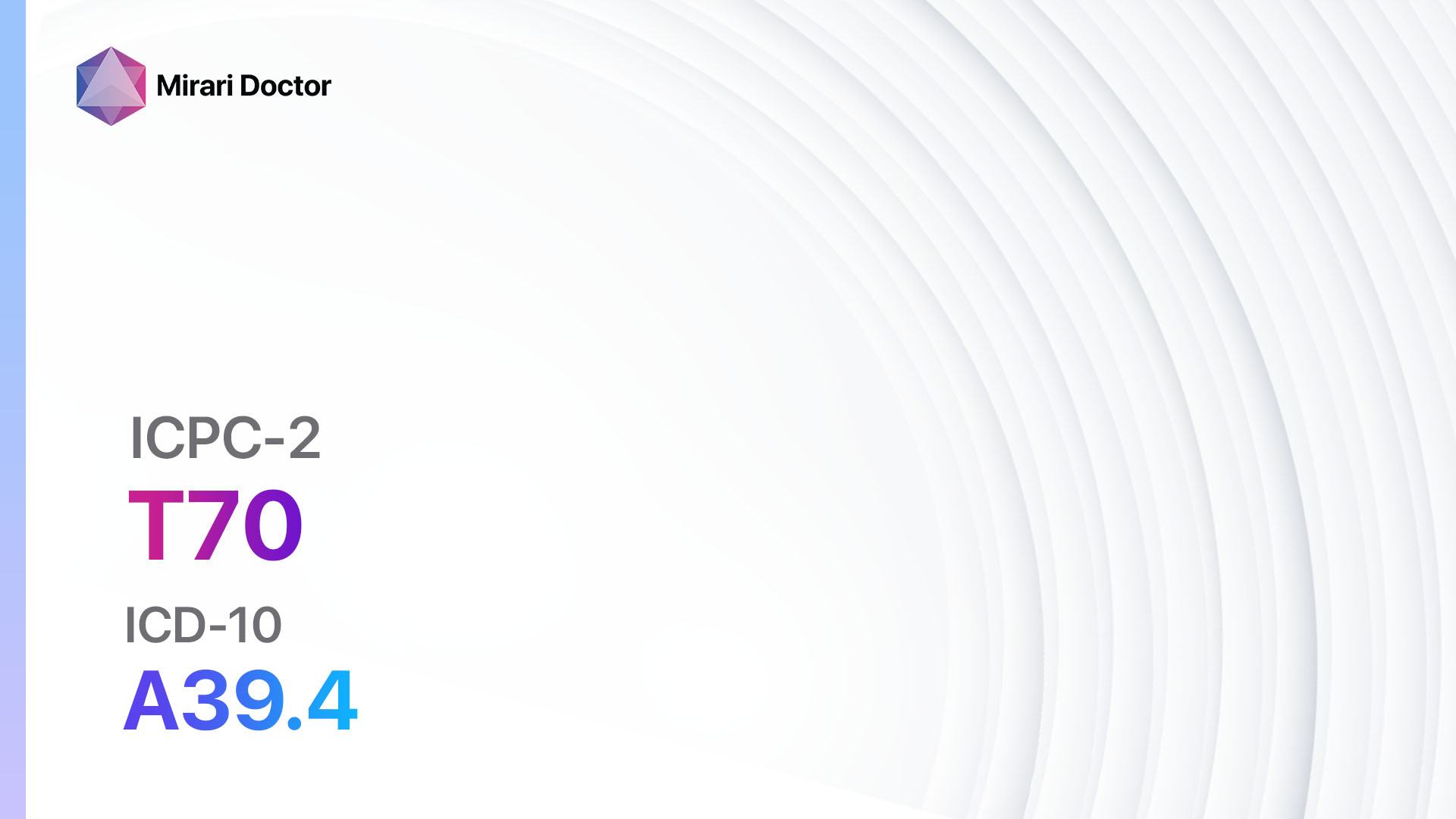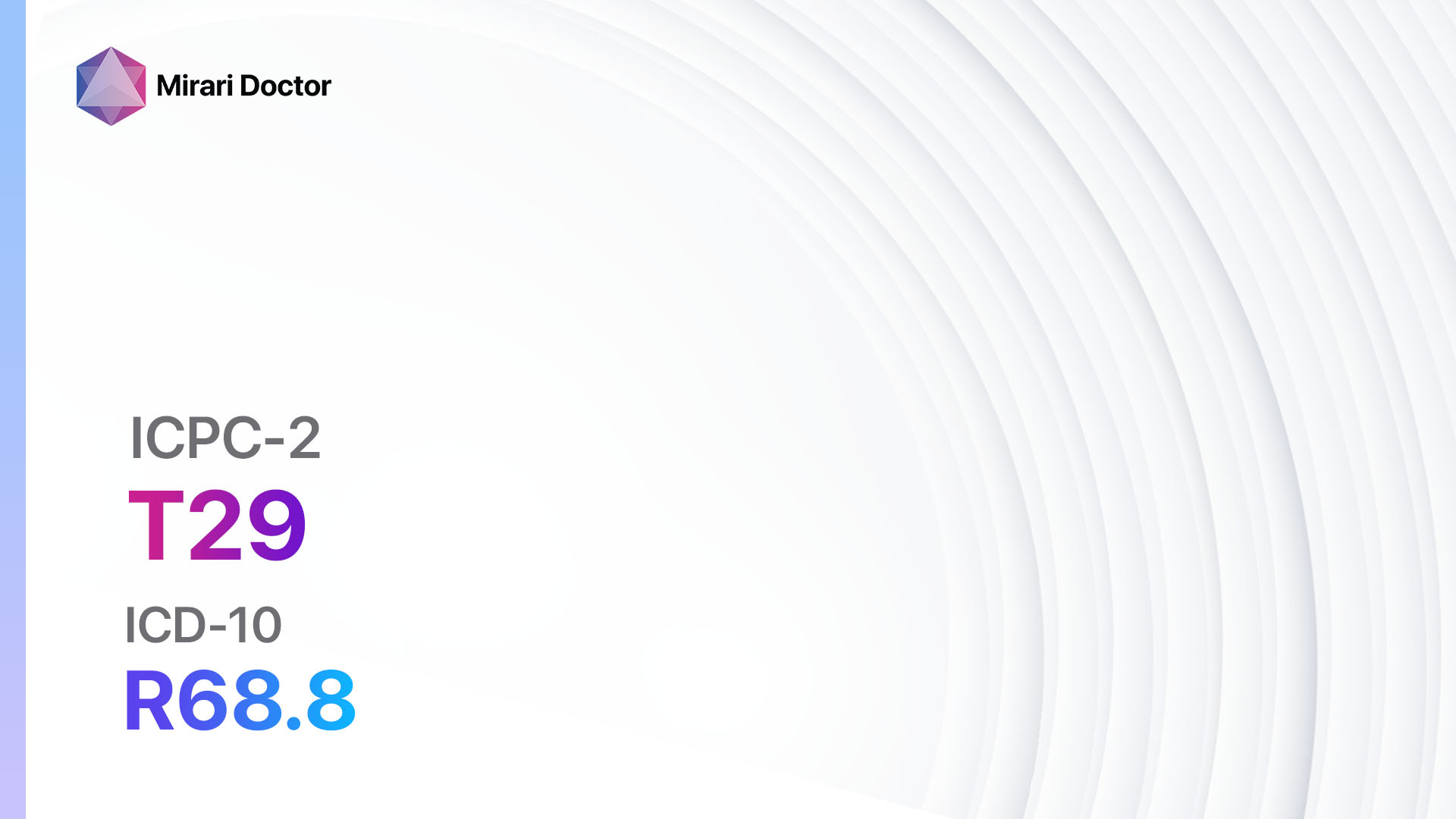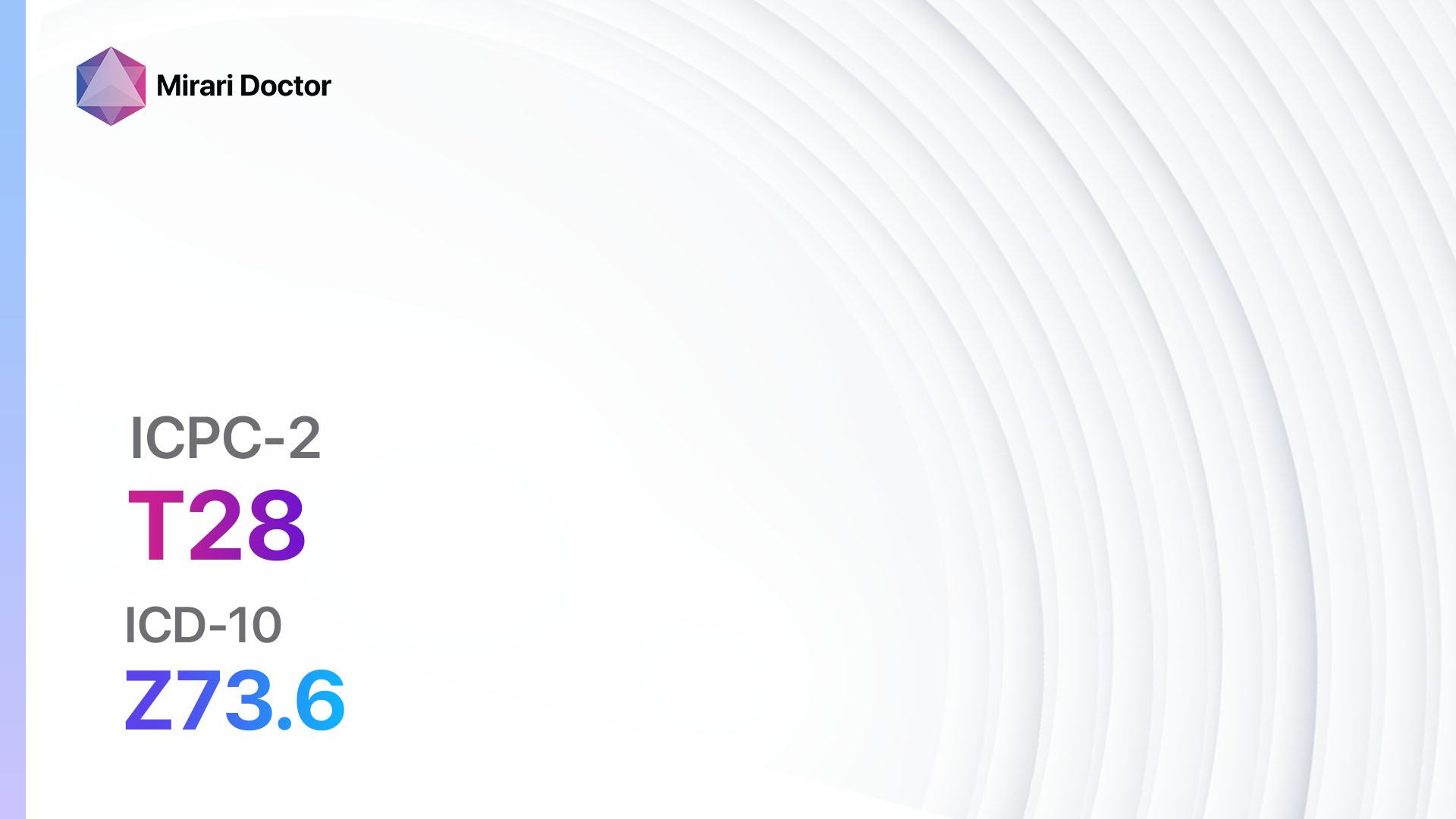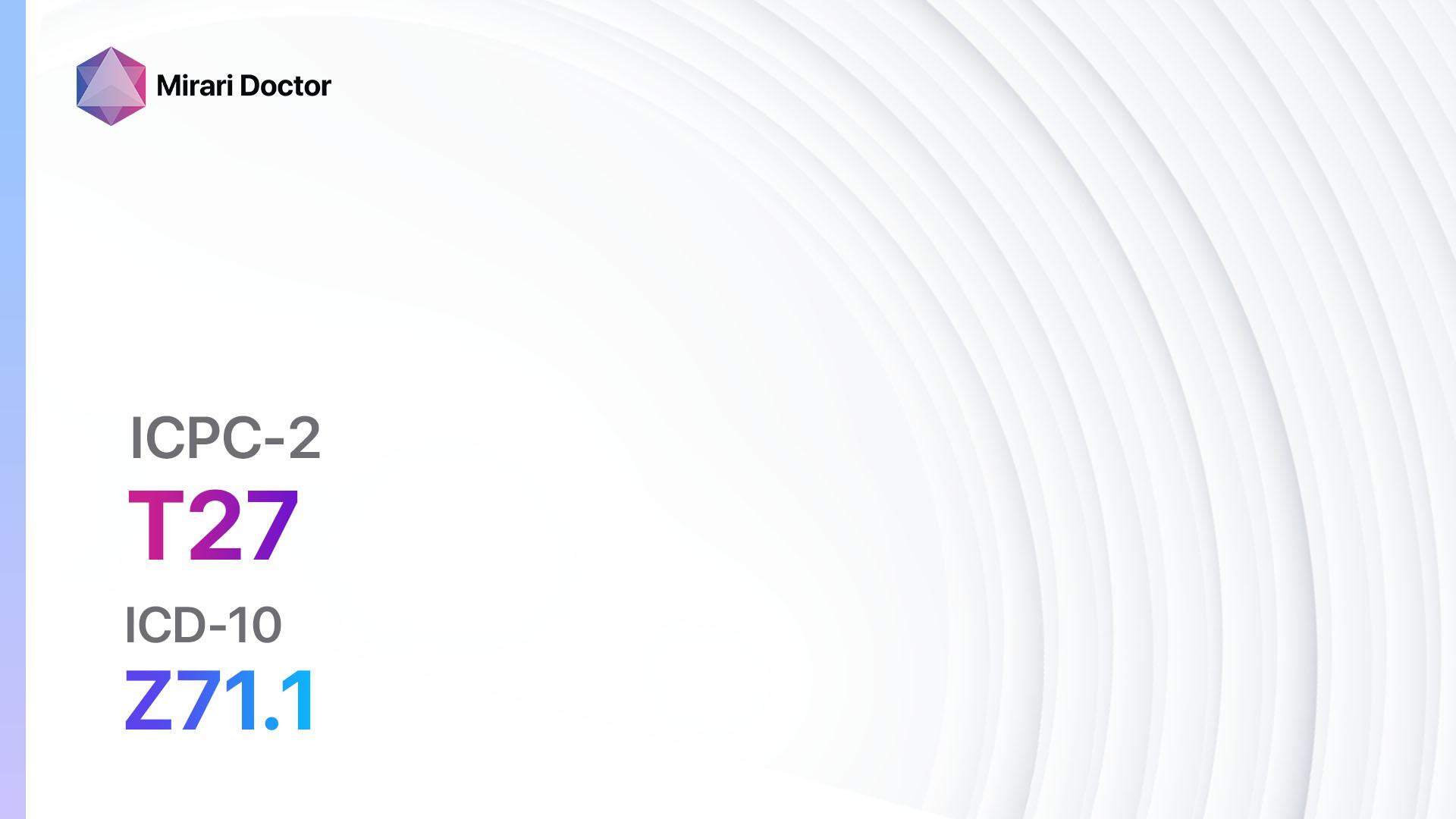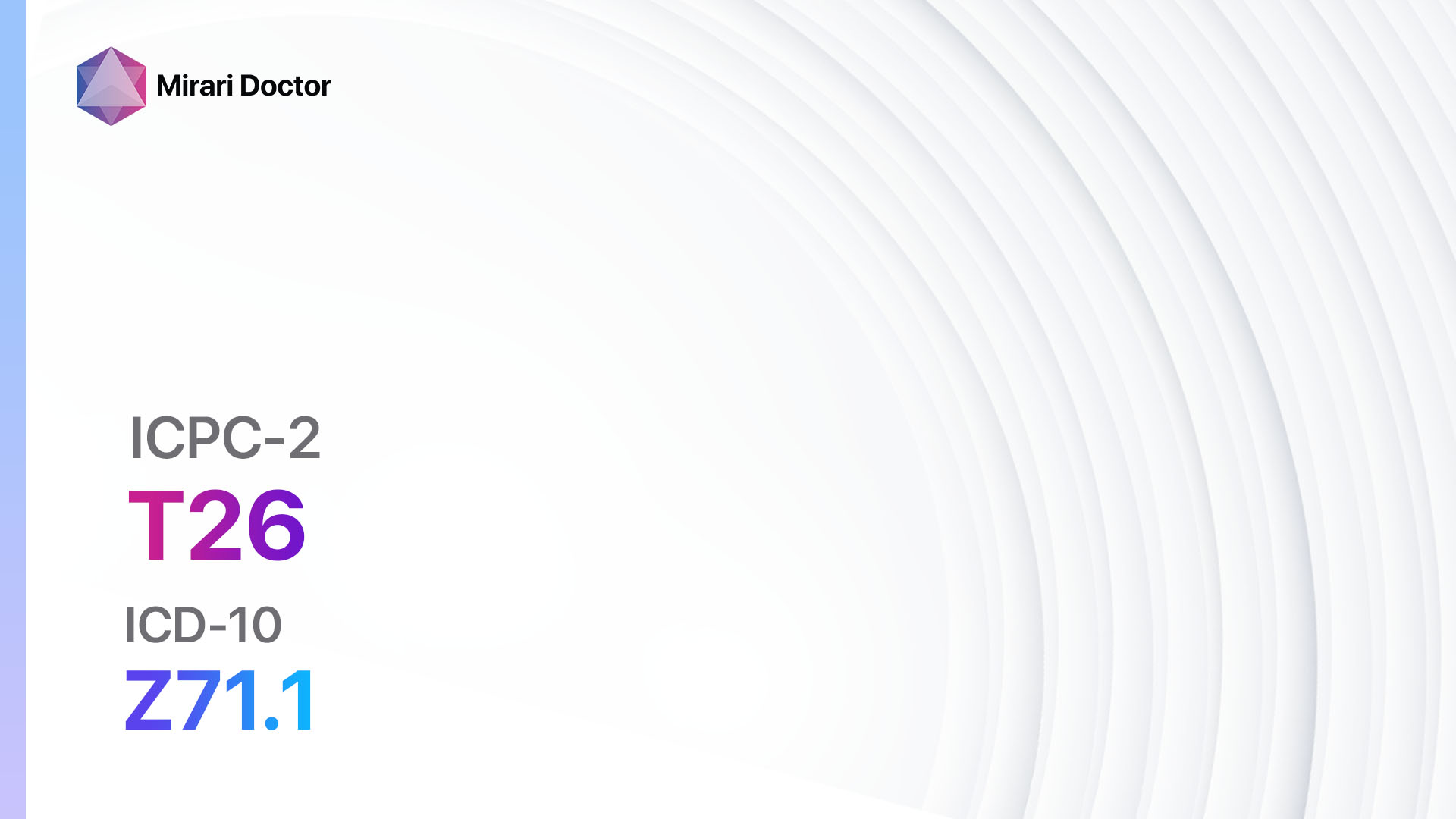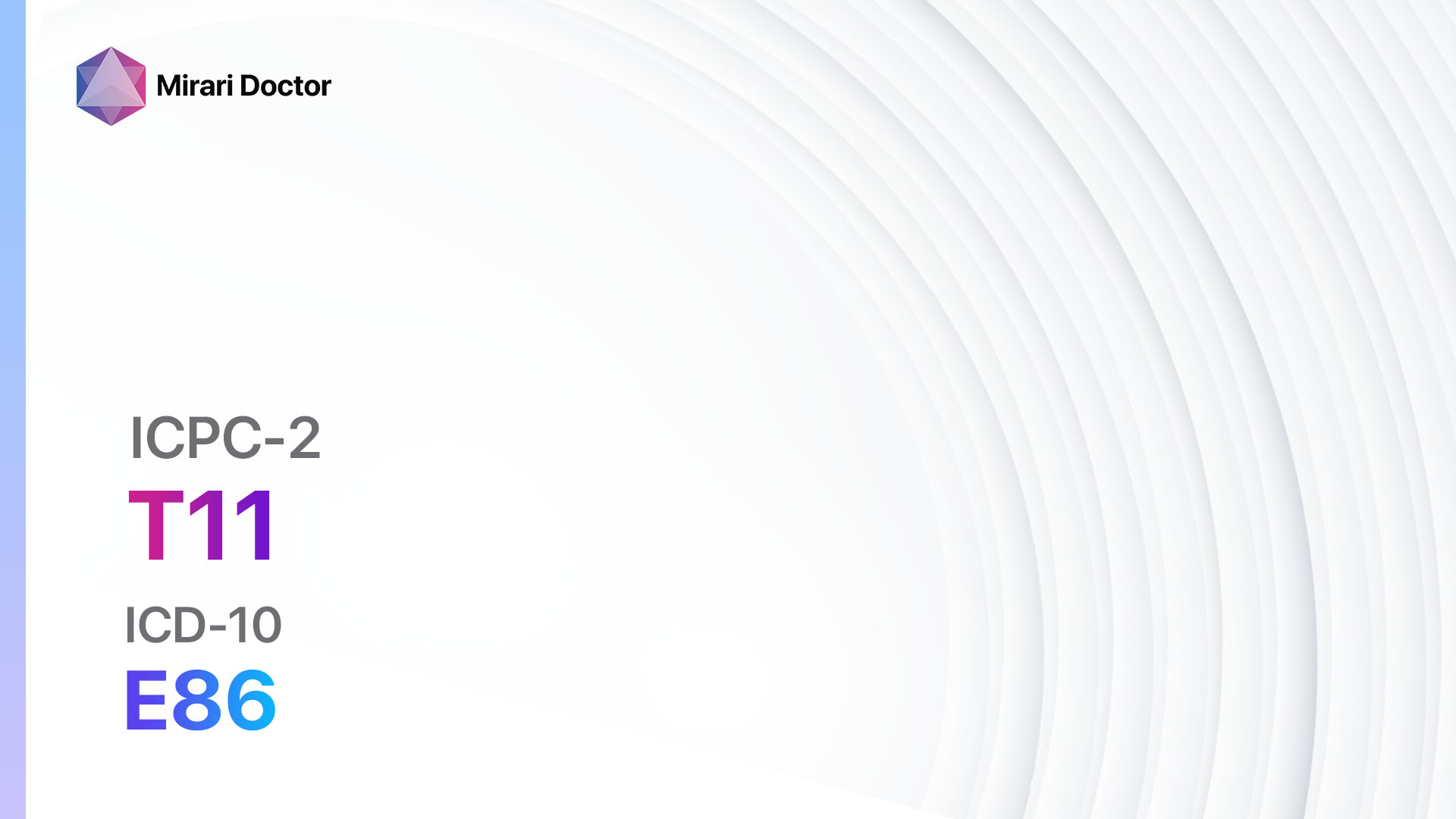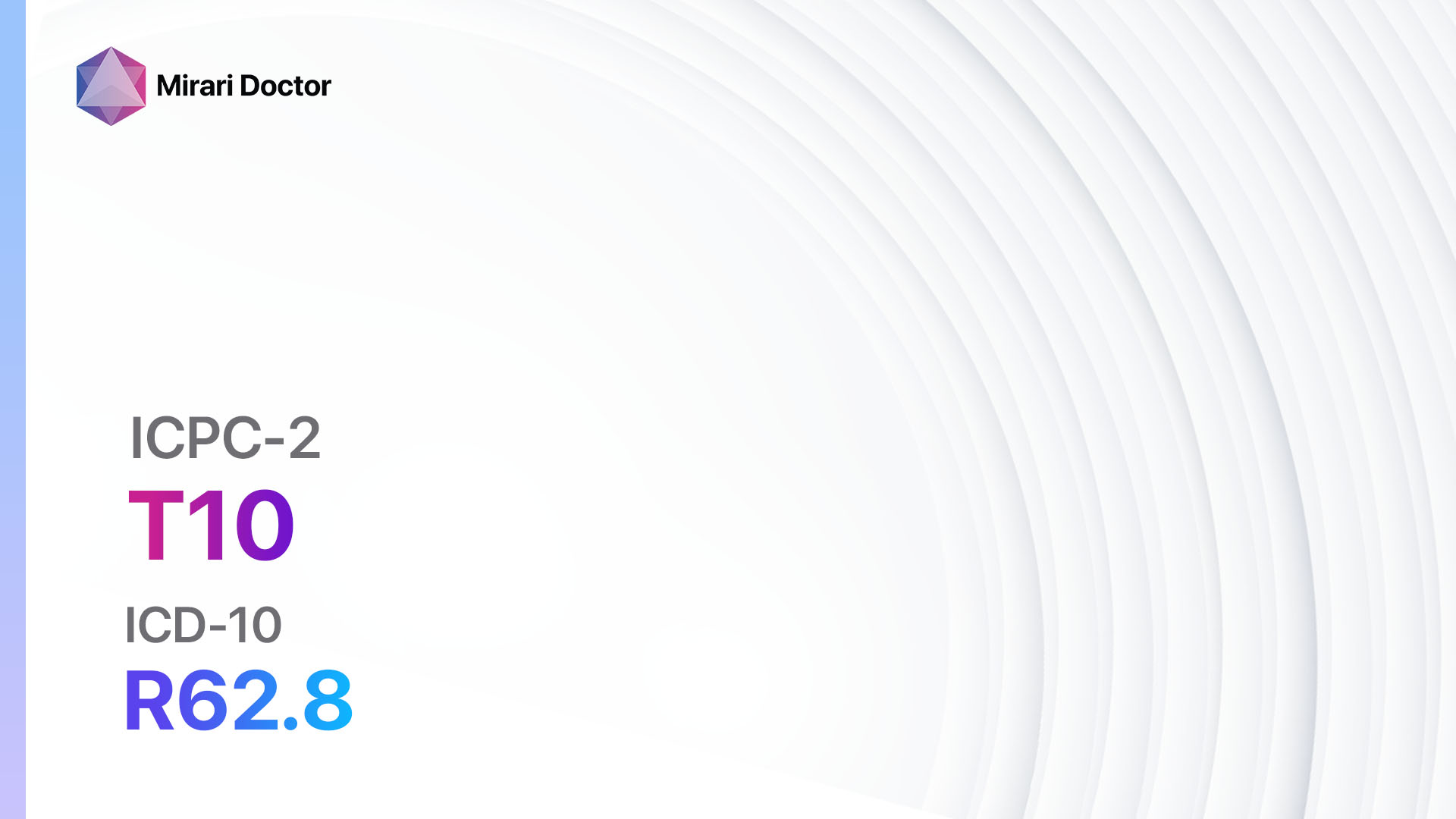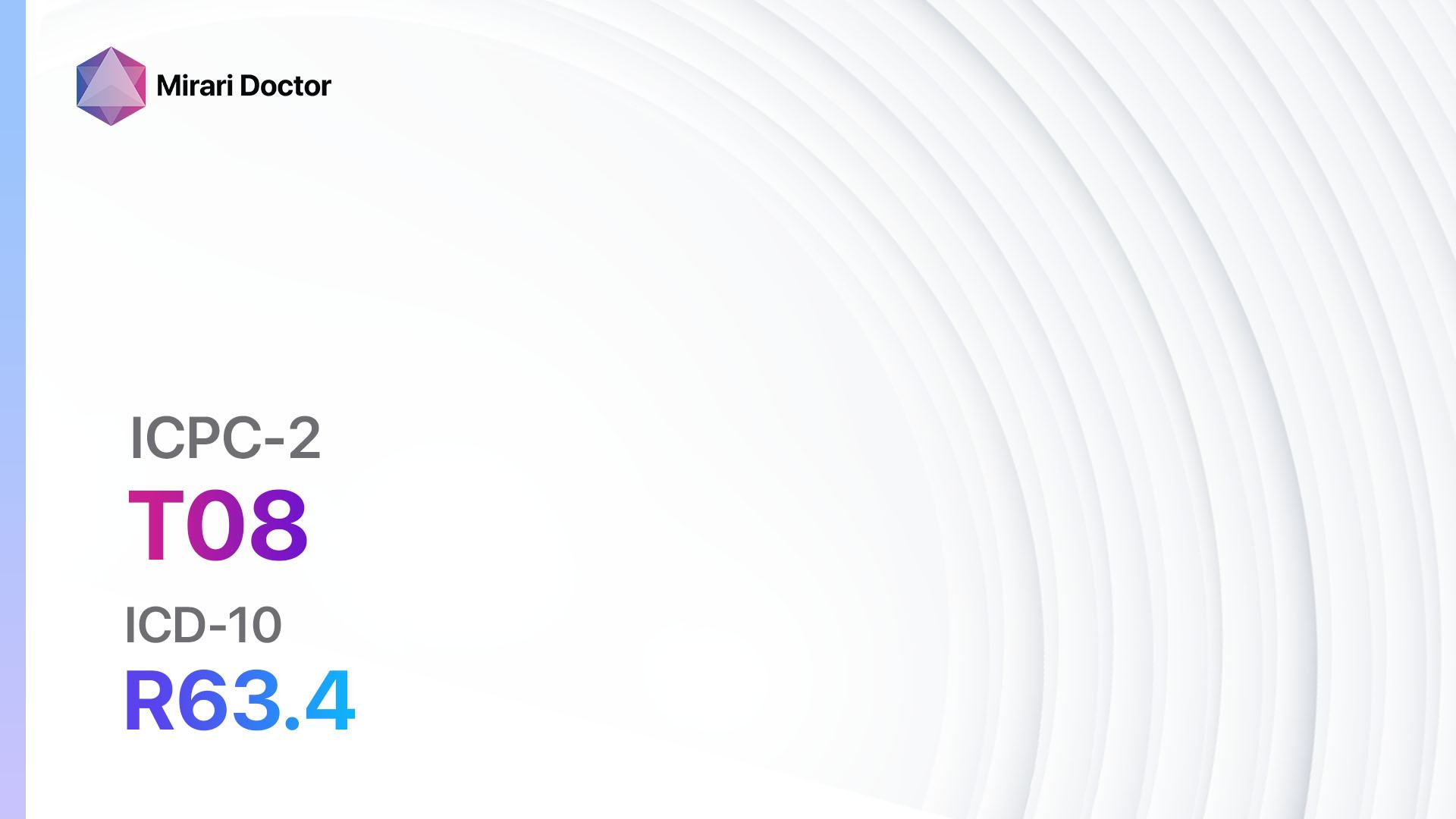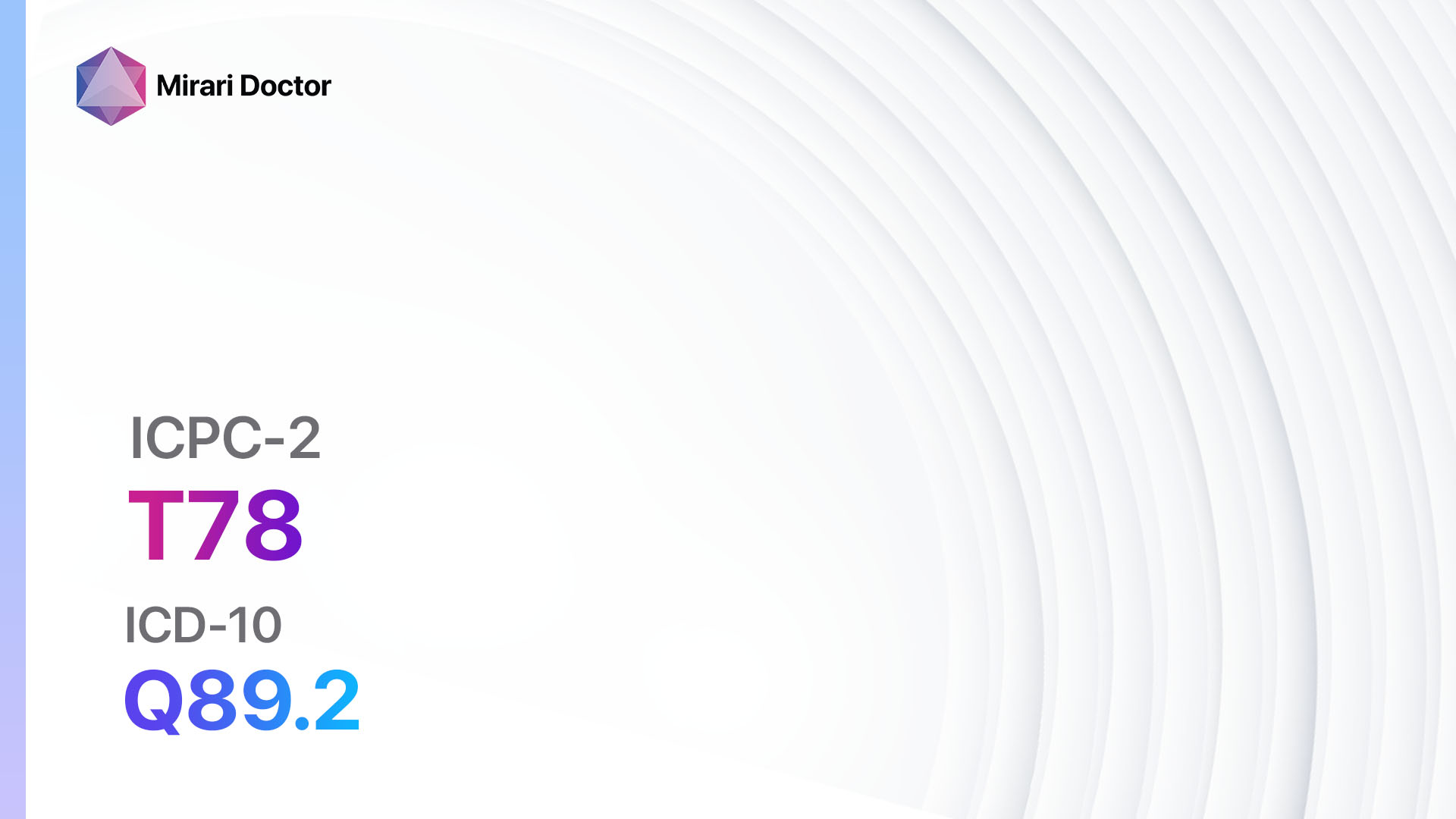
Introduction
Thyroglossal duct/cyst is a congenital anomaly that occurs due to the persistence of the thyroglossal duct during embryonic development. It presents as a cyst or sinus tract in the midline of the neck, usually below the hyoid bone[1]. The aim of this guide is to provide a comprehensive overview of the diagnostic steps, possible interventions, and patient education for thyroglossal duct/cyst.
Codes
- ICPC-2 Code: T78 Thyroglossal duct/cyst
- ICD-10 Code: Q89.2 Congenital malformations of other endocrine glands
Symptoms
- Neck swelling: A painless lump or swelling in the midline of the neck, usually below the hyoid bone[2].
- Difficulty swallowing: In some cases, the cyst or sinus tract may cause discomfort or difficulty in swallowing[3].
- Infection: The cyst or sinus tract can become infected, leading to symptoms such as redness, warmth, tenderness, and pus drainage[4].
Causes
- Persistence of the thyroglossal duct: During embryonic development, the thyroglossal duct normally disappears as the thyroid gland descends to its final position in the neck. If the duct persists, it can give rise to a cyst or sinus tract[5].
- Genetic factors: There may be a genetic predisposition to the development of thyroglossal duct/cyst[6].
Diagnostic Steps
Medical History
- Obtain a detailed medical history, including any previous episodes of neck swelling, infections, or difficulty swallowing.
- Ask about any family history of thyroglossal duct/cyst or other congenital anomalies.
- Inquire about any symptoms or signs of infection, such as redness, warmth, tenderness, or pus drainage[7].
Physical Examination
- Perform a thorough physical examination of the neck, focusing on the midline area below the hyoid bone.
- Palpate the neck to assess for the presence of a cyst or sinus tract.
- Look for signs of infection, such as redness, warmth, tenderness, or pus drainage.
- Evaluate the range of motion of the neck and assess for any difficulty swallowing[8].
Laboratory Tests
- Thyroid function tests: Measure the levels of thyroid hormones (T3, T4) and thyroid-stimulating hormone (TSH) to assess thyroid function.
- Complete blood count (CBC): Check for signs of infection, such as an elevated white blood cell count.
- C-reactive protein (CRP): Measure CRP levels to assess for inflammation[9].
Diagnostic Imaging
- Ultrasound: Use ultrasound imaging to visualize the cyst or sinus tract and assess its size, location, and characteristics.
- Fine-needle aspiration (FNA) biopsy: Perform an FNA biopsy to obtain a sample of the cyst fluid or tissue for further analysis[5].
Other Tests
- CT scan or MRI: In some cases, a CT scan or MRI may be necessary to further evaluate the extent of the cyst or sinus tract and its relationship to surrounding structures[1].
- Thyroid scan: If there is suspicion of a connection between the cyst and the thyroid gland, a thyroid scan may be performed to assess thyroid function and anatomy[6].
Follow-up and Patient Education
- Schedule regular follow-up appointments to monitor the cyst or sinus tract and assess for any changes or complications.
- Educate the patient about the signs and symptoms of infection and the importance of seeking medical attention if these occur.
- Provide information about the potential need for surgical intervention and discuss the risks and benefits of surgery[10].
Possible Interventions
Traditional Interventions
Medications:
Top 5 drugs for Thyroglossal duct/cyst:
- Antibiotics (e.g., Amoxicillin, Clindamycin):
- Cost: Generic versions can be $3-$50/month.
- Contraindications: Hypersensitivity to antibiotics.
- Side effects: Upset stomach, diarrhea.
- Severe side effects: Severe allergic reactions, Clostridium difficile infection.
- Drug interactions: None significant.
- Warning: Finish the full course of antibiotics as prescribed.
- Nonsteroidal anti-inflammatory drugs (NSAIDs) (e.g., Ibuprofen, Naproxen):
- Cost: Generic versions can be $3-$20/month.
- Contraindications: Active peptic ulcer disease, history of gastrointestinal bleeding.
- Side effects: Upset stomach, heartburn.
- Severe side effects: Gastrointestinal bleeding, kidney problems.
- Drug interactions: Aspirin, other NSAIDs.
- Warning: Take with food to minimize stomach upset.
- Pain relievers (e.g., Acetaminophen):
- Cost: Generic versions can be $3-$10/month.
- Contraindications: Severe liver disease, hypersensitivity to acetaminophen.
- Side effects: None significant.
- Severe side effects: Liver damage (with high doses or prolonged use).
- Drug interactions: Alcohol, other medications containing acetaminophen.
- Warning: Do not exceed the recommended dose.
- Antiseptic solutions (e.g., Povidone-iodine):
- Cost: Varies depending on the brand and quantity.
- Contraindications: Hypersensitivity to iodine.
- Side effects: Skin irritation, allergic reactions.
- Severe side effects: None significant.
- Drug interactions: None significant.
- Warning: Use as directed for wound cleansing.
- Topical antibiotics (e.g., Mupirocin):
- Cost: Varies depending on the brand and quantity.
- Contraindications: Hypersensitivity to antibiotics.
- Side effects: Skin irritation, itching.
- Severe side effects: None significant.
- Drug interactions: None significant.
- Warning: Apply a thin layer to the affected area as directed.
Alternative Drugs:
- No alternative drugs are commonly used for the treatment of thyroglossal duct/cyst.
Surgical Procedures:
- Sistrunk procedure: The cyst or sinus tract is surgically removed along with a portion of the hyoid bone to prevent recurrence. Cost: $5,000 to $15,000.
- Excision and drainage: In cases of infected cysts, the cyst is surgically drained and the infected tissue is removed. Cost: $3,000 to $10,000.
Alternative Interventions
- No alternative interventions have been proven effective in the treatment of thyroglossal duct/cyst.
Lifestyle Interventions
- No lifestyle interventions have been proven effective in the treatment of thyroglossal duct/cyst.
It is important to note that the cost ranges provided are approximate and may vary depending on the location and availability of the interventions.
Mirari Cold Plasma Alternative Intervention
Understanding Mirari Cold Plasma
- Safe and Non-Invasive Treatment: Mirari Cold Plasma is a safe and non-invasive treatment option for various skin conditions. It does not require incisions, minimizing the risk of scarring, bleeding, or tissue damage.
- Efficient Extraction of Foreign Bodies: Mirari Cold Plasma facilitates the removal of foreign bodies from the skin by degrading and dissociating organic matter, allowing easier access and extraction.
- Pain Reduction and Comfort: Mirari Cold Plasma has a local analgesic effect, providing pain relief during the treatment, making it more comfortable for the patient.
- Reduced Risk of Infection: Mirari Cold Plasma has antimicrobial properties, effectively killing bacteria and reducing the risk of infection.
- Accelerated Healing and Minimal Scarring: Mirari Cold Plasma stimulates wound healing and tissue regeneration, reducing healing time and minimizing the formation of scars.
Mirari Cold Plasma Prescription
Video instructions for using Mirari Cold Plasma Device – T78 Thyroglossal duct/cyst (ICD-10:Q89.2)
| Mild | Moderate | Severe |
| Mode setting: 1 (Infection) Location: 6 (Throat, Lymphatic & Thyroid) Morning: 15 minutes, Evening: 15 minutes |
Mode setting: 1 (Infection) Location: 6 (Throat, Lymphatic & Thyroid) Morning: 30 minutes, Lunch: 30 minutes, Evening: 30 minutes |
Mode setting: 1 (Infection) Location: 6 (Throat, Lymphatic & Thyroid) Morning: 30 minutes, Lunch: 30 minutes, Evening: 30 minutes |
| Mode setting: 2 (Wound Healing) Location: 6 (Throat, Lymphatic & Thyroid) Morning: 15 minutes, Evening: 15 minutes |
Mode setting: 2 (Wound Healing) Location: 6 (Throat, Lymphatic & Thyroid) Morning: 30 minutes, Lunch: 30 minutes, Evening: 30 minutes |
Mode setting: 2 (Wound Healing) Location: 6 (Throat, Lymphatic & Thyroid) Morning: 30 minutes, Lunch: 30 minutes, Evening: 30 minutes |
| Mode setting: 3 (Antiviral Therapy) Location: 6 (Throat, Lymphatic & Thyroid) Morning: 15 minutes, Evening: 15 minutes |
Mode setting: 3 (Antiviral Therapy) Location: 6 (Throat, Lymphatic & Thyroid) Morning: 30 minutes, Lunch: 30 minutes, Evening: 30 minutes |
Mode setting: 3 (Antiviral Therapy) Location: 6 (Throat, Lymphatic & Thyroid) Morning: 30 minutes, Lunch: 30 minutes, Evening: 30 minutes |
| Mode setting: 7 (Immunotherapy) Location: 1 (Sacrum) Morning: 15 minutes, Evening: 15 minutes |
Mode setting: 7 (Immunotherapy) Location: 1 (Sacrum) Morning: 30 minutes, Lunch: 30 minutes, Evening: 30 minutes |
Mode setting: 7 (Immunotherapy) Location: 1 (Sacrum) Morning: 30 minutes, Lunch: 30 minutes, Evening: 30 minutes |
| Total Morning: 60 minutes approx. $10 USD, Evening: 60 minutes approx. $10 USD |
Total Morning: 120 minutes approx. $20 USD, Lunch: 120 minutes approx. $20 USD, Evening: 120 minutes approx. $20 USD, |
Total Morning: 120 minutes approx. $20 USD, Lunch: 120 minutes approx. $20 USD, Evening: 120 minutes approx. $20 USD, |
| Usual treatment for 7-60 days approx. $140 USD – $1200 USD | Usual treatment for 6-8 weeks approx. $2,520 USD – $3,360 USD |
Usual treatment for 3-6 months approx. $5,400 USD – $10,800 USD
|
 |
|
Use the Mirari Cold Plasma device to treat Thyroglossal duct/cyst effectively.
WARNING: MIRARI COLD PLASMA IS DESIGNED FOR THE HUMAN BODY WITHOUT ANY ARTIFICIAL OR THIRD PARTY PRODUCTS. USE OF OTHER PRODUCTS IN COMBINATION WITH MIRARI COLD PLASMA MAY CAUSE UNPREDICTABLE EFFECTS, HARM OR INJURY. PLEASE CONSULT A MEDICAL PROFESSIONAL BEFORE COMBINING ANY OTHER PRODUCTS WITH USE OF MIRARI.
Step 1: Cleanse the Skin
- Start by cleaning the affected area of the skin with a gentle cleanser or mild soap and water. Gently pat the area dry with a clean towel.
Step 2: Prepare the Mirari Cold Plasma device
- Ensure that the Mirari Cold Plasma device is fully charged or has fresh batteries as per the manufacturer’s instructions. Make sure the device is clean and in good working condition.
- Switch on the Mirari device using the power button or by following the specific instructions provided with the device.
- Some Mirari devices may have adjustable settings for intensity or treatment duration. Follow the manufacturer’s instructions to select the appropriate settings based on your needs and the recommended guidelines.
Step 3: Apply the Device
- Place the Mirari device in direct contact with the affected area of the skin. Gently glide or hold the device over the skin surface, ensuring even coverage of the area experiencing.
- Slowly move the Mirari device in a circular motion or follow a specific pattern as indicated in the user manual. This helps ensure thorough treatment coverage.
Step 4: Monitor and Assess:
- Keep track of your progress and evaluate the effectiveness of the Mirari device in managing your Thyroglossal duct/cyst. If you have any concerns or notice any adverse reactions, consult with your health care professional.
Note
This guide is for informational purposes only and should not replace the advice of a medical professional. Always consult with your healthcare provider or a qualified medical professional for personal advice, diagnosis, or treatment. Do not solely rely on the information presented here for decisions about your health. Use of this information is at your own risk. The authors of this guide, nor any associated entities or platforms, are not responsible for any potential adverse effects or outcomes based on the content.
Mirari Cold Plasma System Disclaimer
- Purpose: The Mirari Cold Plasma System is a Class 2 medical device designed for use by trained healthcare professionals. It is registered for use in Thailand and Vietnam. It is not intended for use outside of these locations.
- Informational Use: The content and information provided with the device are for educational and informational purposes only. They are not a substitute for professional medical advice or care.
- Variable Outcomes: While the device is approved for specific uses, individual outcomes can differ. We do not assert or guarantee specific medical outcomes.
- Consultation: Prior to utilizing the device or making decisions based on its content, it is essential to consult with a Certified Mirari Tele-Therapist and your medical healthcare provider regarding specific protocols.
- Liability: By using this device, users are acknowledging and accepting all potential risks. Neither the manufacturer nor the distributor will be held accountable for any adverse reactions, injuries, or damages stemming from its use.
- Geographical Availability: This device has received approval for designated purposes by the Thai and Vietnam FDA. As of now, outside of Thailand and Vietnam, the Mirari Cold Plasma System is not available for purchase or use.
References
- Thyroglossal Duct Cyst Imaging: Practice Essentials, Computed Tomography, Magnetic Resonance Imaging. Medscape. Retrieved from https://emedicine.medscape.com/article/1346365-overview
- Thyroglossal duct cysts: How they form, symptoms, and diagnosis. Medical News Today. Retrieved from https://www.medicalnewstoday.com/articles/319747
- Thyroglossal Duct Cyst. Columbia Doctors. Retrieved from https://www.columbiadoctors.org/specialties/ear-nose-throat/conditions/thyroglossal-duct-cyst
- Thyroglossal Duct Cyst: Surgery, Treatment, and Symptoms. Healthline. Retrieved from https://www.healthline.com/health/thyroglossal-duct-cyst
- Thyroglossal Duct Cysts in Children & Adults: Symptoms & Surgery. Cleveland Clinic. Retrieved from https://my.clevelandclinic.org/health/diseases/22351-thyroglossal-duct-cysts
- Thyroglossal Duct Cysts in Children: Diagnosis and Treatment. Massachusetts General Hospital. Retrieved from https://www.massgeneral.org/children/thyroglossal-duct-cyst/diagnosis-and-treatment
- Thyroglossal Duct Cyst. Boston Children’s Hospital. Retrieved from https://www.childrenshospital.org/conditions/thyroglossal-duct-cyst
- What Is a Thyroglossal Duct Cyst? WebMD. Retrieved from https://www.webmd.com/a-to-z-guides/what-is-a-thyroglossal-duct-cyst
- Thyroglossal Duct Cysts. SingHealth. Retrieved from https://www.singhealth.com.sg/patient-care/conditions-treatments/thyroglossal-duct-cysts
- Thyroglossal Duct Cyst. American Academy of Otolaryngology-Head and Neck Surgery. Retrieved from https://www.enthealth.org/conditions/thyroglossal-duct-cyst/
Related articles
Made in USA


